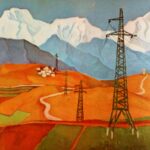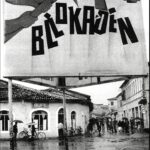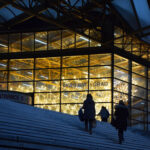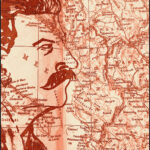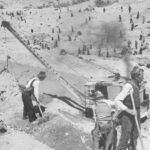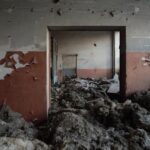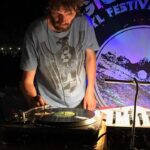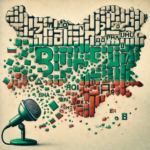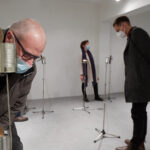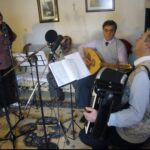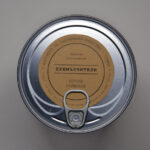The Labyrinth of the Nineties
An Exhibition
This exhibition aims to encourage a fresh look at the decade that transformed the lives of millions of people in the post-Yugoslav region (and globally) and whose repercussions we feel today, perhaps more than ever. It is the result of three years of research, collaboration, and joint work of individuals, experts, activists, and partner organizations from across the former Yugoslav region.
The question is whether as individuals and as societies we have come out of the labyrinth into which we fell in the early 1990s. Since the end of the wars, the post-Yugoslav political elites have consistently worked on spreading hate speech, especially when commemorating the anniversaries of traumatic events, with almost complete disregard for the lives and well-being of ordinary citizens. Instead of dealing with the war’s disastrous consequences, the conflict has been kept alive in people’s minds.
The Labyrinth of the Nineties is a reaction to policies that prioritize ethnonationalism and chauvinism over social justice, myths over human life, and violence above everyday solidarity. We invite visitors to wander freely through this labyrinth, and to look at this traumatic period from several perspectives, particularly from the perspective of those people whose lives were destroyed in a single day, those who were against the war, those who had to flee their homes, and those who were deceived by all sides.
No exhibition can fully encapsulate a decade in human history. It is certainly the case with the 1990s, which left a lasting impact on our region. This exhibition is thus conceived as a cluster of fragments. We encourage visitors to complement this exhibition in their own minds with what they feel is missing, what should be displayed, and what we still need to come to terms with. Only by collectively reflecting on the recent past can we gain a deeper understanding of our present and imagine a different future.
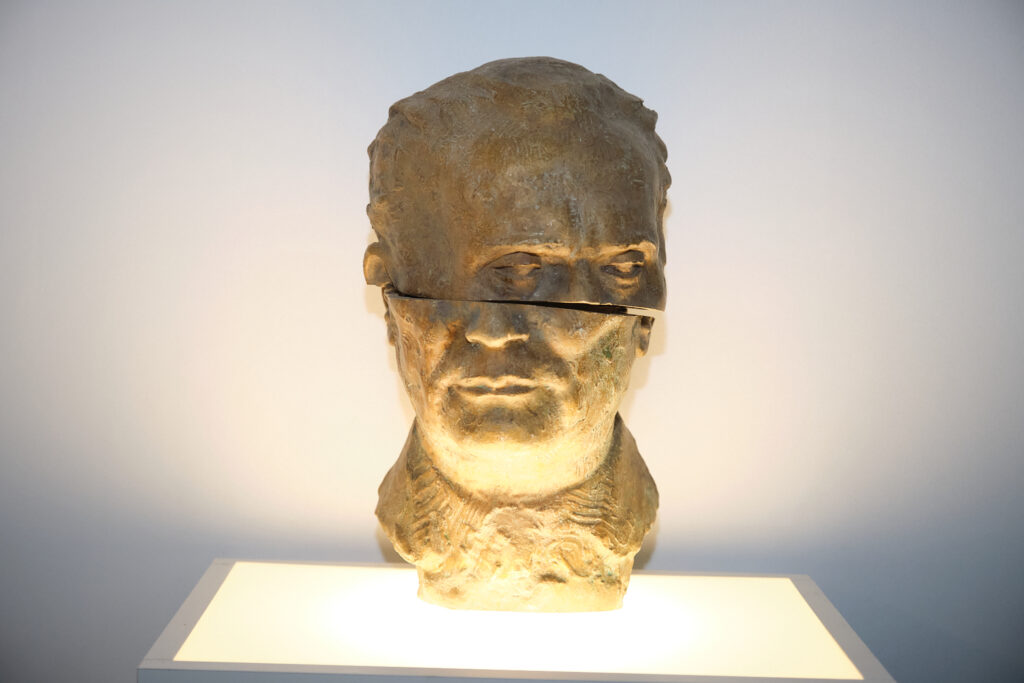
Josip Broz Tito
JOSIP BROZ TITO
Leader of the partisan movement and the president of Yugoslavia;
Author: Antun Augustinčić, slashed, perpetrator unknown;
From Dragan Srdić’s work “The Anatomy Lesson” (1998)
Symbols
With the end of socialist regimes in Europe and the break-up of Yugoslavia, there was a significant and abrupt change in political, social, and cultural symbols. State names and flags were changed, holidays redefined, streets renamed, old monuments torn down and new ones erected, while the former heroes were replaced overnight by national icons.
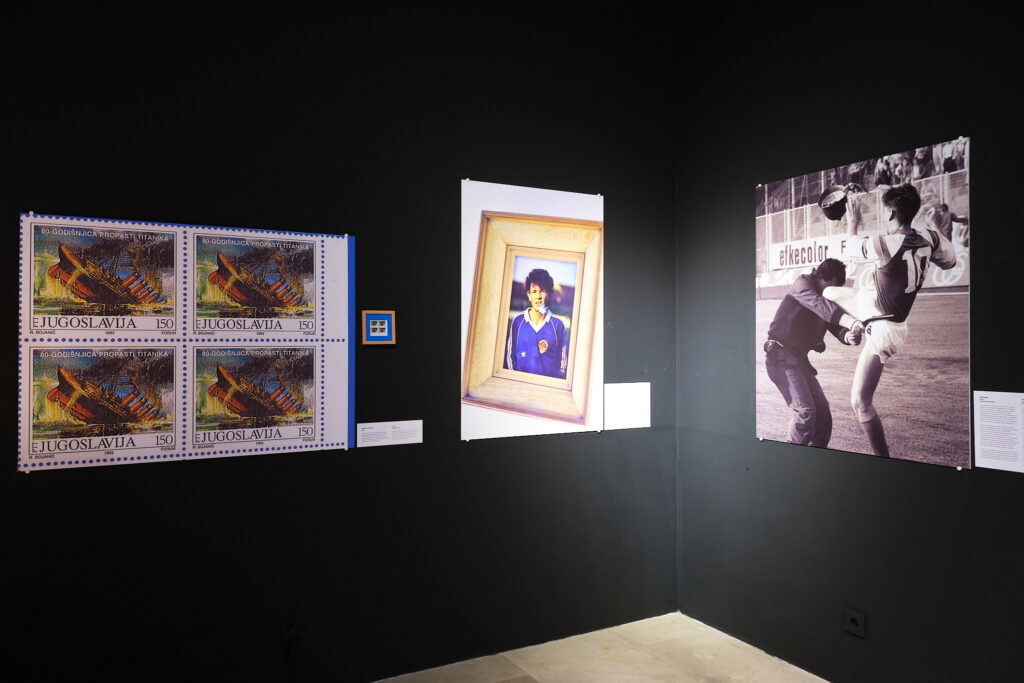
Titanic, Siniša and Stipe, Maksimir
TITANIC, 1992
(Left) The Yugoslav postal service issued a stamp in 1992 commemorating the 80th anniversary of the Titanic’s sinking on April 15, 1912 (painted by Radomir Bojanić). At the bottom is the name of the country that issued the stamp. It was counting its final days.
SINIŠA AND STIPE
(Center) This picture shows the famous football player Siniša Mihajlović in the jersey of the Yugoslav youth national team. It was found in his destroyed house in Borovo, Croatia. His best childhood friend, Stipe, shot at the picture in 1991. They met again after the war. The photograph is reproduced here with the kind permission of the Museum of Applied Arts in Belgrade.
MAKSIMIR
(Right) Photo: Emil Vas; On Sunday, May 13, 1990, Dinamo from Zagreb and Crvena Zvezda (Red Star) from Belgrade met at the Maksimir stadium in Zagreb. The match was quickly interrupted as nationalist clashes broke out between fans. The photograph depicts the moment when Dinamo captain Zvonimir Boban assaults policeman Refik Ahmetović. Boban’s action made him a national hero in Croatia.
Deception
To strengthen nationalist positions, mobilize the masses, and consolidate or conquer power, citizens of the former Yugoslavia were deceived in various ways. Here we show various methods of deception ranging from state propaganda, television and the press, books claiming ancient origins of their nation, leaders explaining their mission, maps showing a greater state they aim to achieve, political symbols and slogans to popular fortune tellers. Some of the techniques of deception still live on.
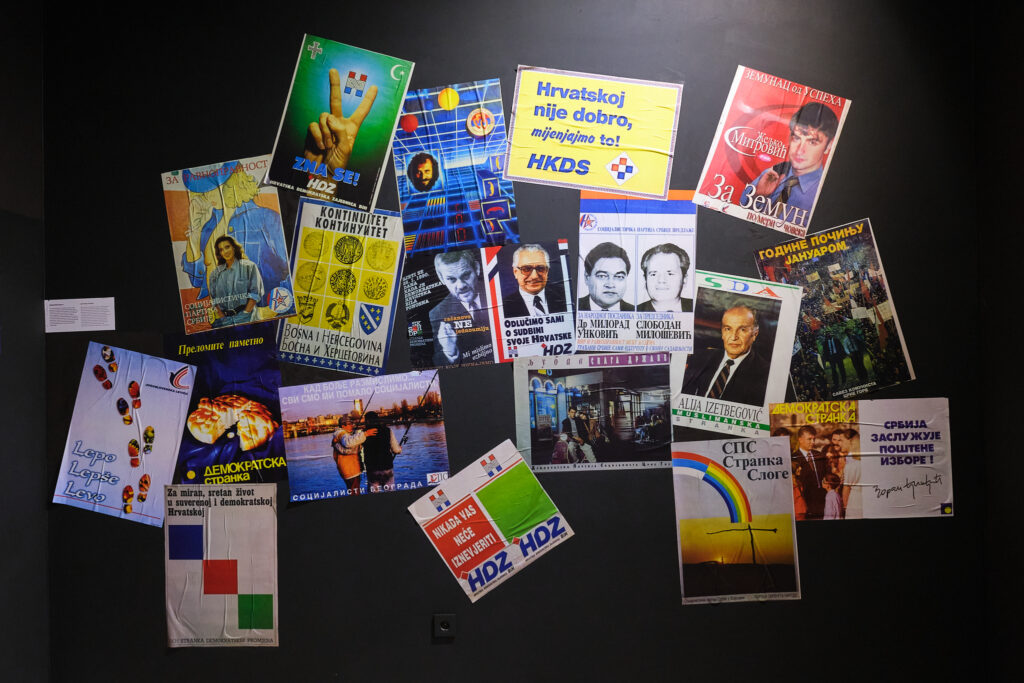
Electoral Posters
ELECTORAL POSTERS
The first multiparty elections were conducted in Yugoslavia during 1990. Nationalistic parties and leaders emerged victorious almost everywhere by promising protection to their nations as well as a bright future to their voters.
Night
Special forms of life unfolded at night. Bombings and attacks on civilians were particularly intense during the night hours. All forms of crime flourished, from smuggling and prostitution to contract killings and clashes between new bosses. At night, there was also space for resistance, alternative nightlife, rave parties, and passionate concerts even when bombs were falling.
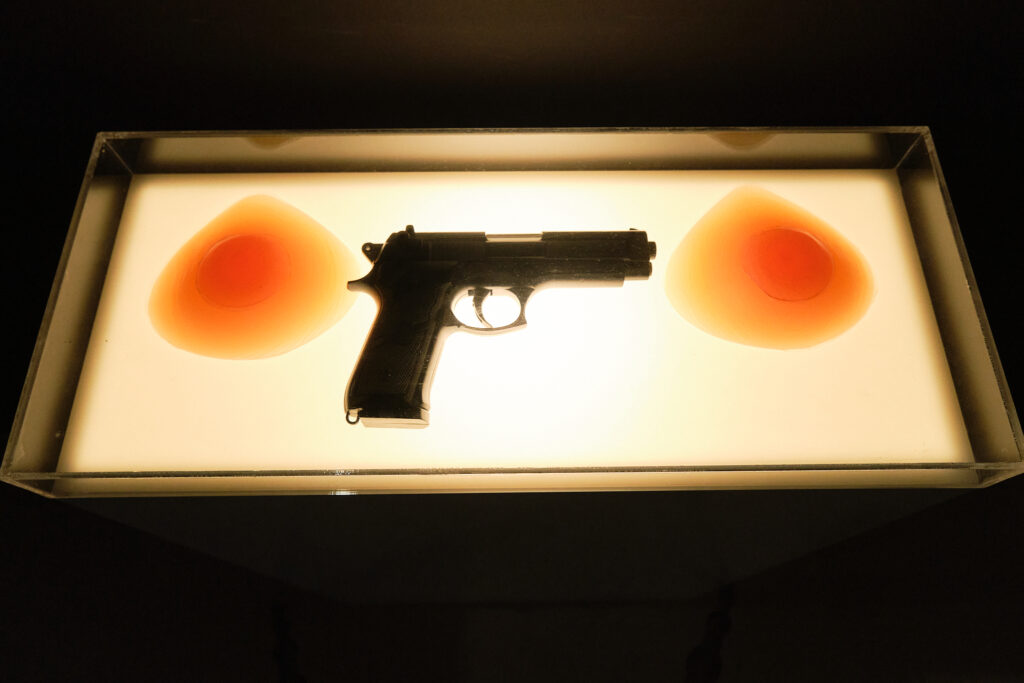
Guns and Silcone
GUNS AND SILICONE
Wars and sanctions emboldened organized crime, and many criminals became leaders of paramilitary units. Weapons became a part of everyday life. Since the early 1990s, silicone implants have been approved for use in aesthetic medicine. Silicone breasts became part of the image of many Balkan media and music stars, often associated with the criminal underworld.
Dissent
Not everyone succumbed to the ideological, political, and wartime terror of the ruling regimes, but many brave individuals saved their societies from even greater violence and lawlessness. Forms of resistance ranged from independent radio waves, parallel education, small and large protests, rescue operations, humanitarian aid packages, newspapers, art, to personal sacrifice and refusal to shoot.
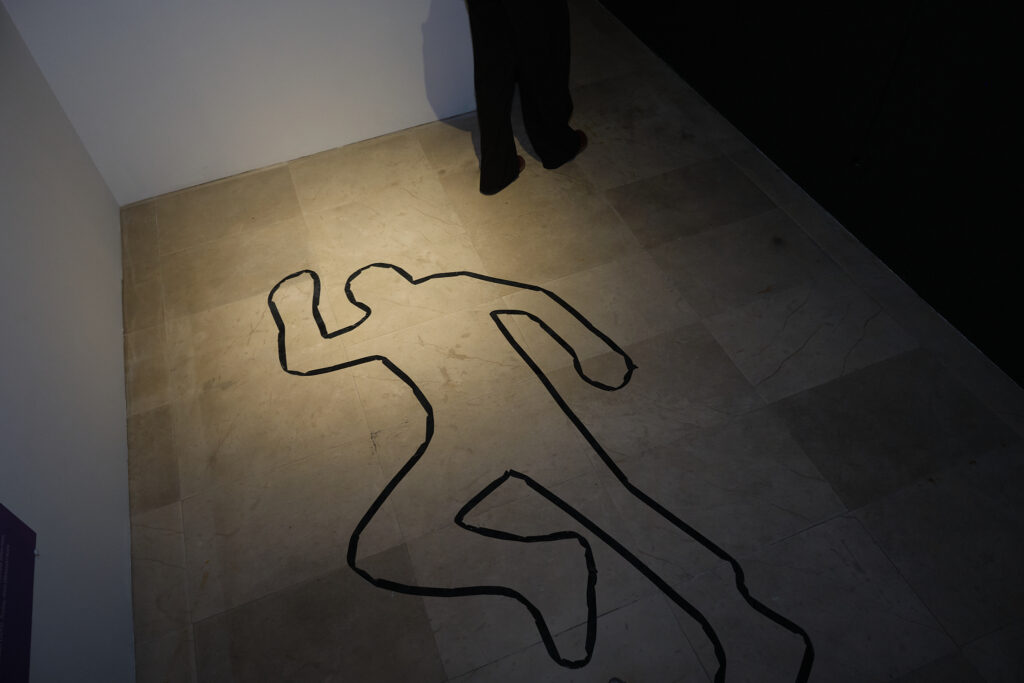
Slavko Ćuruvijas Murder
SLAVKO ĆURUVIJA’S MURDER
Slavko Ćuruvija (1949-1999), owner of the opposition newspaper Dnevni telegraf and the magazine Evropljanin, was assassinated in Belgrade on April 11, 1999. Members of the State Security were convicted of the murder. They were acquitted in 2024.
Humor
Despite wartime conditions and undemocratic regimes, various independent media outlets, intellectuals, artists, journalists, and cartoonists offered critical interpretations of events, often with bitter humor and satire, showed the absurdity of the situation, eased the daily life for stressed citizens, restored their confidence and faith in change, and ridiculed the powerful.
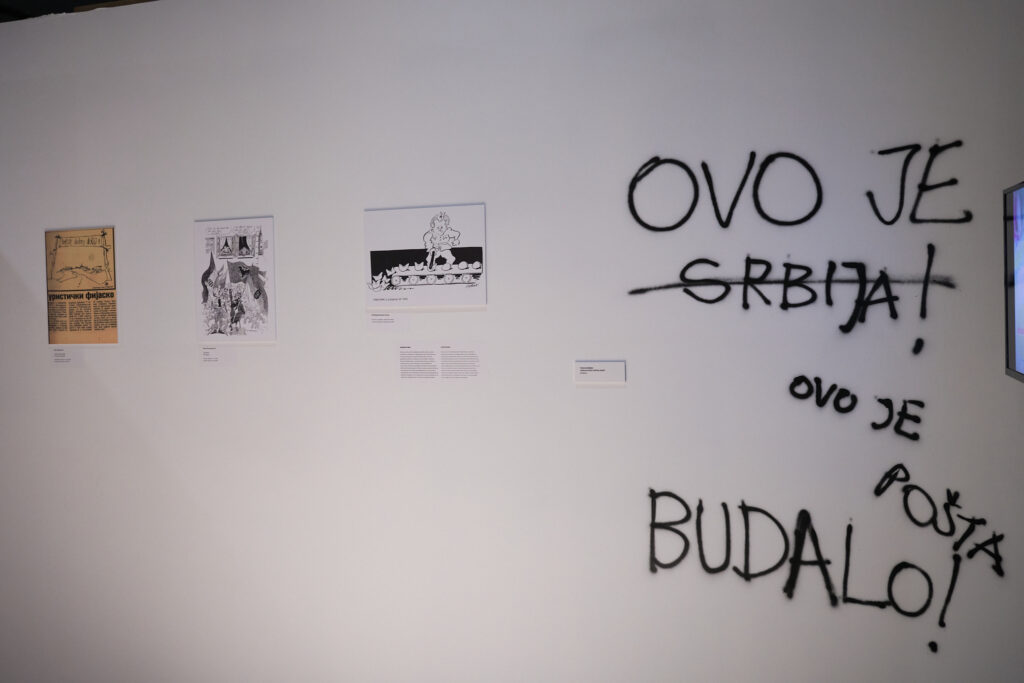
Graffiti in Sarajevo: “This is Serbia!” – “This is a Post Office, you idiot!”
Transition
The transition from socialism to neoliberal capitalism shook societies and individual lives. Today, the very word “transition” is synonymous with privatization, the closure of large industrial plants, mass job losses, plunder, corruption, and impoverishment. While citizens found ways to survive, a new tycoon class was created thanks to wild capitalism, a captured state, and organized crime.
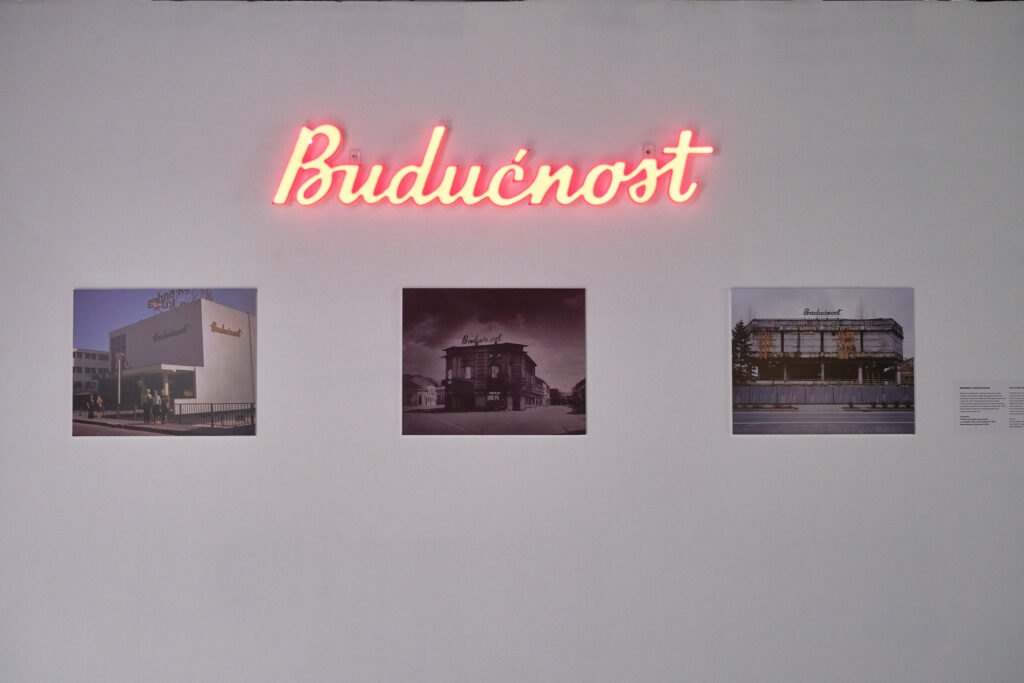
The future: at your service
THE FUTURE: AT YOUR SERVICE
Photos: Archive photo, author unknown; Toni Hnojčik, “Grgurić House, Budućnost,” 1992; Bojan Mrđenović, “Budućnost,” 2008.
The department store and many shops of the successful company from Pakrac Budućnost [The Future] were destroyed during the war between 1991 and 1995. The remains and ruins of this once successful company were privatized after the war.
1995
You have entered the very heart of the labyrinth of the 1990s, the year 1995, when the major events took place: the swift military actions Flash and Storm, which ended the war in Croatia, but led to the expulsion of the Serb population from the area called Krajina; the massacres at Markale in Sarajevo and in Tuzla, which were bombed from the Serb positions; the NATO’s military intervention. Almost halfway through this decade and this year itself, the key event in our recent history occurred, the genocide in Srebrenica. Peace came at the end of that year. It was to last for three years.
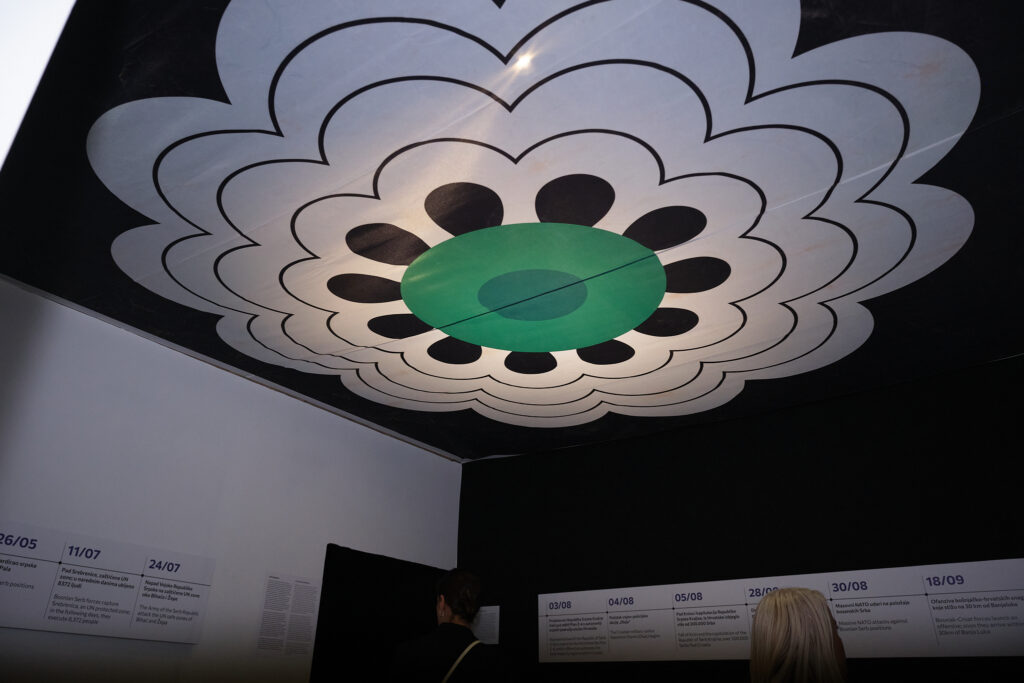
The flower of Srebrenica
THE FLOWER OF SREBRENICA
Srebrenica was the site of one of the most horrific crimes committed on European soil after WWII. The United Nations International Court of Justice and the International Criminal Tribunal for the former Yugoslavia recognized the crime as genocide, and Commander of the Army of the Republika Srpska (VRS) General Ratko Mladić and President of the Republika Srpska Radovan Karadžić were sentenced to life imprisonment. DNA analysis has identified 8,372 of those who were killed. “The flower of Srebrenica” is a symbol of remembrance.
Violence
To create ethnically pure states, increase power, enable plunder, or overcome opponents, it was necessary to employ a repertoire of violence. Here, with illustrations from different parts of the former Yugoslavia, we present the most commonly used forms of terror: expulsion, camps, rape, killings, exclusion, obliteration, siege, and destruction.
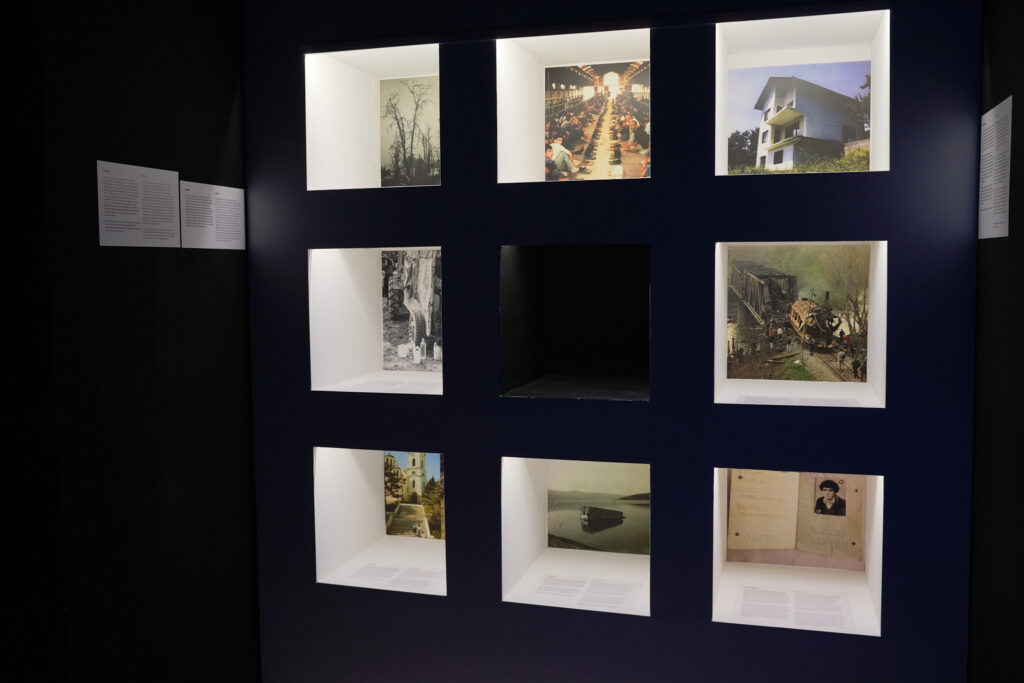
Happiness
Although the 1990s are remembered for suffering and tragedy, people tried to laugh, have fun, and enjoy themselves even in the most difficult hours. Love knows no time or place, children are born all the time, weddings are held even under sniper fire, and kids find ways to play in every situation, defying the cruel world around them.
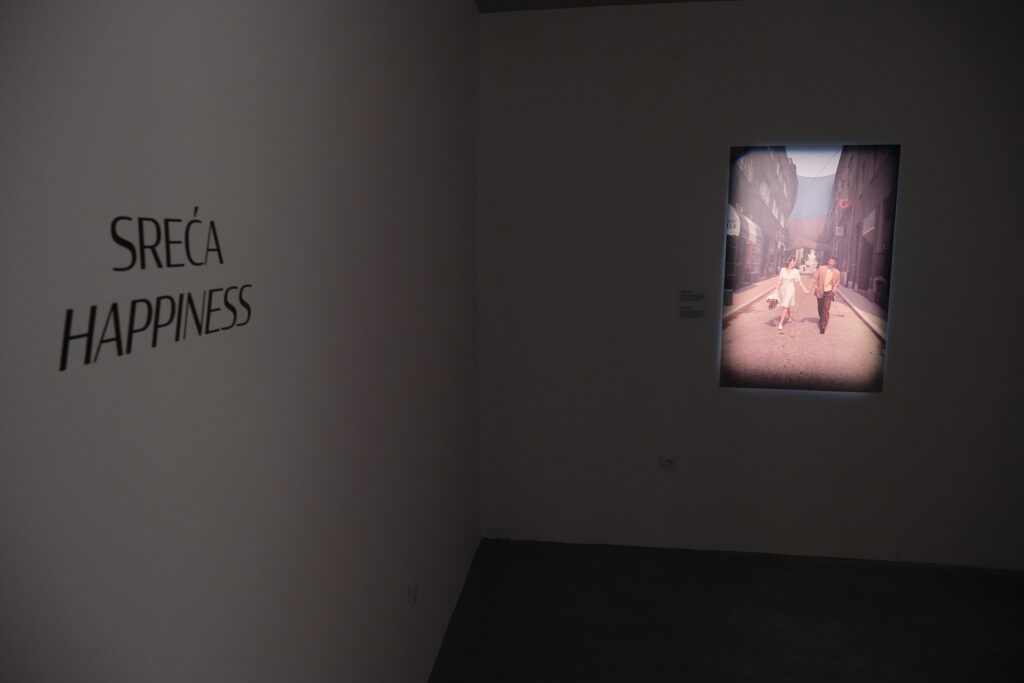
Sarajevos newlyweds
SARAJEVO’S NEWLYWEDS
Photo: Danilo Krstanović
Sanela and Emir Klarić married in besieged Sarajevo in 1995. In the photograph, the newlyweds are walking down Kulovićeva Street. In the backdrop we see the canvas spread between the buildings for protection from sniper fire from the adjacent hills. The portrait of the happy newlyweds is today considered as one of the most significant photos in the history of war photography. Sanela and Emir have two daughters and are still married.
At the end:
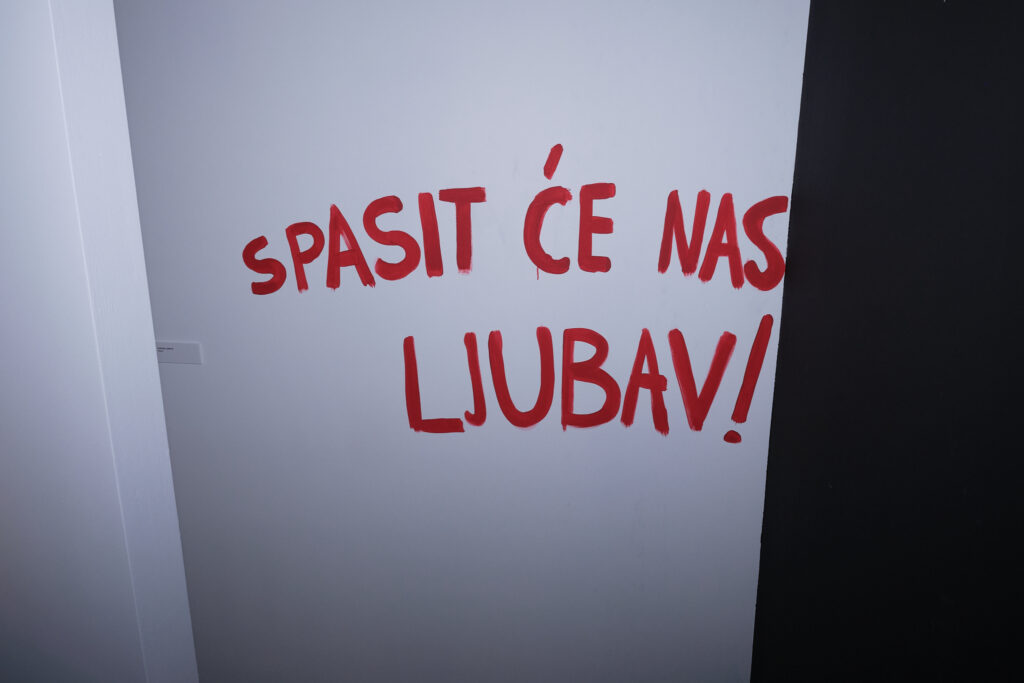
Graffiti: Love will save us!

